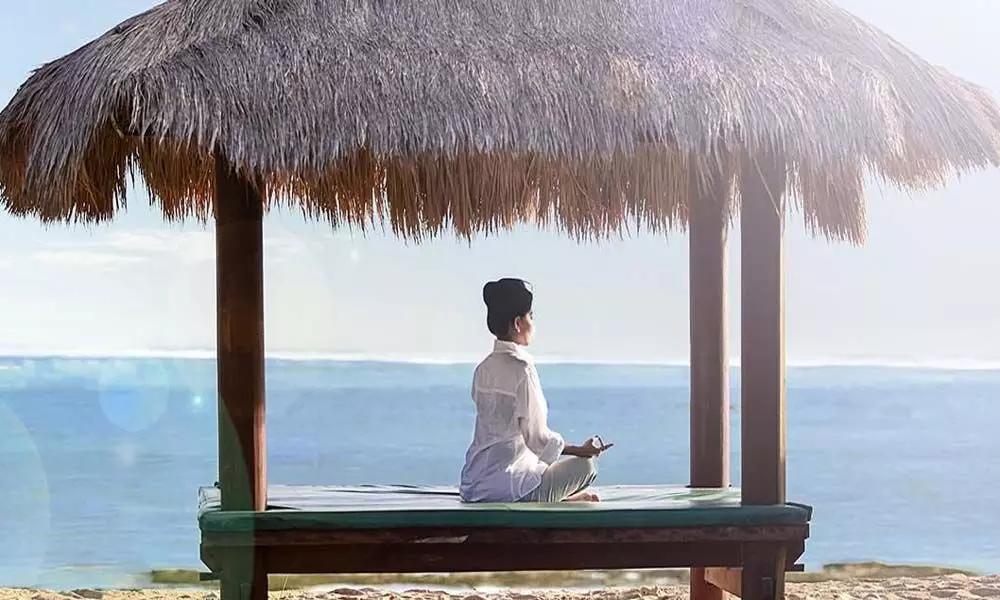How wellness tourism gaining traction among millennials
Strong economic growth in the last few years has resulted in a transition in dietary habits, which has led to a steep rise in lifestyle-related ailments
image for illustrative purpose

A FICCI EY report on wellness defines it more scientifically as, "Wellness, unlike health, is more than an absence of diseases and involves a holistic perspective of an individual. It involves a wide range of human experiences such as personal growth, family, education, community development, medical care, coaching and work". Well, wellness isn't a new concept; it has always been there. Strong economic growth in the last few years has resulted in a transition in dietary habits, which has led to a steep rise in lifestyle-related ailments.
Wellness tourism is the powerful intersection of two large and growing industries: the $2.6 trillion tourism industry and the $4.2 trillion wellness industry. Holistic health and prevention are increasingly at the centre of consumer decision-making, and people now expect to continue their healthy lifestyles and wellness routines when they are away from home.
Wellness expenditures ($4.5 trillion) are more than half as large as total global health expenditures ($7.8 trillion, based on WHO data). A rise in both consumer interest and purchasing power presents tremendous opportunities for companies, particularly as spending on personal wellness rebounds after stagnating or even declining during the Covid-19 crisis. At the same time, the wellness market is getting increasingly crowded, creating the need to be strategic about where and how companies compete.
Aging populations, fast-paced lives and high-pressure jobs are resulting in an increase in chronic conditions, stress, depression and sleep problems. People are also generally more conscious than ever of their mental and physical well-being, and are increasingly open to an expanding range of available treatments provided outside of standard healthcare systems.
The wellness tourism economy is much larger than a narrowly-defined set of typical wellness businesses, such as spas, wellness retreats, thermal/mineral springs and boot camps. Wellness travellers (especially secondary wellness travellers) are looking to continue their wellness lifestyle during travel, and this lifestyle may encompass healthy eating, exercise/fitness routines, mind-body practices, nature experiences, connections with local people and culture, etc., thereby creating opportunities for businesses such as yoga studios, gyms and fitness centers, healthy food stores/markets, events, arts and crafts, museums and many others.
In addition to wellness experiences, all wellness tourists need transportation, food and lodging, and they will likely seek out shopping or entertainment. All of these businesses - whether they are wellness-specific or not - benefit from wellness tourism and are part of the wellness tourism economy. There are numerous opportunities to infuse wellness into all kinds of amenities and services, which can help businesses differentiate, provide more value, and capture higher spending by wellness travellers. Examples include airport spas that target wellness travellers in transit; wellness-centered hotels for those who want better sleep and regular fitness routines; specialty restaurants serving healthy, organic or local cuisine; transportation companies that use clean fuels or low/zero-emission vehicles; or gift shops that sell products that are connected to unique local wellness traditions.
Wellness tourism may help destinations mitigate the negative impacts of mass tourism or over-tourism. Because wellness travellers tend to be high-spenders and favour experiences that are authentic and unique, there is less pressure for destinations to engage in a 'race to the bottom' strategy that competes on price and quantity.
Wellness tourism also provides destinations with an opportunity to reduce the seasonality of visitor flows. For example, ski destinations can attract wellness travellers interested in hiking and other outdoor activities in the summer time, while beach destinations can appeal to travellers who are looking for a more tranquil environment to de-stress or take a retreat in the wintertime.
In India, wellness is a concept which has been in vogue since ancient times. Traditional medicinal and health practices like Ayurveda and yoga have propounded the concept of mental and bodily wellness. Most of the ancient wellness concepts have largely focused on the basic needs of an individual within the need hierarchy, namely a focus on health, nutrition and relaxation.
The wellness market in India has been on a quiet yet steady rise over the past few years, and if FICCI's latest estimates are to go by, the industry is valued at a whopping Rs 490 billion. There are a host of factors that are responsible for driving growth in this sector.
India's 443 million millennials spend an average of Rs 4,000 per month on health and wellness services and products, says a latest report by Numb Research, an Indian market research firm. With people being stuck at home during the pandemic-induced lockdown, home fitness has become more prevalent especially among millennials, for whom health and happiness is a priority, causing huge online sale of home gym equipment along with that of masks, sanitisers, multivitamins and other essentials.

